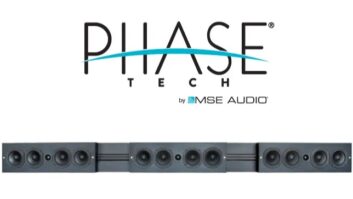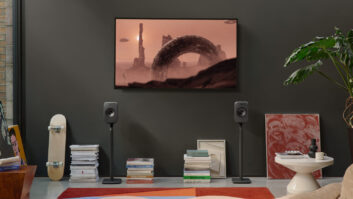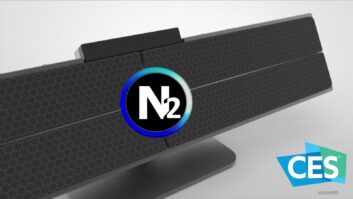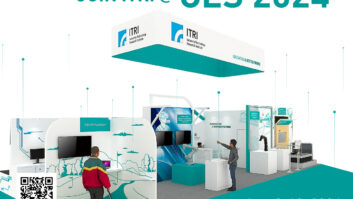NEW YORK – Audio buyers placing bets on what they’ll find during International CES will hit the jackpot if they choose soundbars and active tabletop wireless speakers.
Traditional and untraditional forms of component audio, however, will also put in a strong showing, though the strongest sales growth in home audio have occurred in soundbars and tabletop wireless speakers.
Wireless speakers are part of a product category described by The NPD Group as digital media speakers, which comprise traditional iPoddocking speakers, docking speakers with embedded Bluetooth or Wi-Fi, and Bluetooth- and Wi-Fi-only speakers.
During CES dealers will find at least seven suppliers expanding their selection of dedicated Bluetooth speakers, many designed for portable AC/DC operation. At least three other suppliers, including Kicker, will launch their first Bluetooth-only speakers. Bluetooth will also wind up in more soundbars from multiple companies.
For its part, another company will launch its first tabletop wireless streaming speaker which combines Wi-Fibased AirPlay and Bluetooth.
In the docking segment of the digital media speaker market, at least six companies will display some of the industry’s first tabletop speakers with Apple’s eight-pin Lightning connector. They include JBL, Philips and Bang & Olufsen, which have already announced Lightning-equipped docks.
More companies will combine connectivity options in their digital media speakers. At least three suppliers, for example, will combine Apple’s Lightning pin connector and Bluetooth to appeal to households with a mix of Android and Apple devices. Also for mixed households, at least two companies will unveil a wireless multiroom- audio system that streams music over Wi-Fi networks from PCs and Macs as well as from Apple and Android devices that run a proprietary app.
In a separate Wi-Fi-speaker development, anothe company will unveil an AirPlay speaker with proprietary technology to enable AirPlay streaming via Wi-Fi directly between Apple devices and the speaker when the speaker is out of range of a home Wi-Fi network.
Dealers will find several more suppliers adding nearfield communications (NFC) technology to their Bluetooth speakers to speeds up initial Bluetooth pairing by enabling users to tap an NFC-equipped smartphone against the speaker.
In soundbar developments, at least two major brands will expand their soundbar selections, and at least one company will show 5.1-channel soundbars with detachable, battery-powered wireless speakers that can be placed to the left and right of the viewer’s main seating position.
In audio components, dealers will find more products that connect old product concepts with new music sources. Examples include stereo integrated amps with Bluetooth and outboard DACs with USB audio inputs.
In more traditional component segments, GoldenEar Technology will expand its speaker selection, and other companies will unveil special editions of products to celebrate anniversaries. Speaker introductions will range from low to esoteric price points up to as much as $30,000/pair if not more.
In the component audio category soundbars represent the fastest-growing segment, and sales will continue to grow at high double-digit rates in 2013, analysts and suppliers said. Reasons include the expansion of flat TVs into secondary rooms of the house, the continuing replacement of CRT TVs with flat-screen models, and the need to improve the quality of thin sound from thin TVs, sometimes simply to make dialog intelligible, suppliers said.
Consumers are also turning to quality soundbars, including models with Bluetooth, to reproduce music, and they’re turning to soundbars at prices starting at around $500 or $599 as a betterlooking, easier-to-install replacement for traditional HTiB systems, some suppliers contended. (See audio roundtable.)
In wireless speakers demand is growing in large part because music-laden smartphones have replaced dedicated MP3 players for most Americans, suppliers said. Smartphone users want to keep their phone close by at all times rather than docked in a docking speaker across the room, suppliers said.
The rise of Android smartphones, which lack a standardized way of docking to speakers for music playback, is also causing consumers and suppliers to turn to speakers with Bluetooth and Wi-Fi for the convenient playback of phone-stored music, they said.
For these reasons, overall sales of docking speakers are on the decline even though, within that segment, sales of wireless-equipped docking speakers are up, analysts and suppliers said.
Future gains in wireless-only speakers, however, will eventually stabilize total tabletop speaker sales and “will ensure that the overall category stabilizes and returns to small growth in unit terms within the next two years,” said Jack Wetherhill, senior market analyst at Futuresource Consulting.
In 2012, Futuresource estimates factory- level unit sales of docking speakers fell by 19 percent in the U.S. to 12.9 million on a dollar decline of 16 percent to $1.21 billion, including models with docks and embedded Bluetooth or Wi-Fi.













